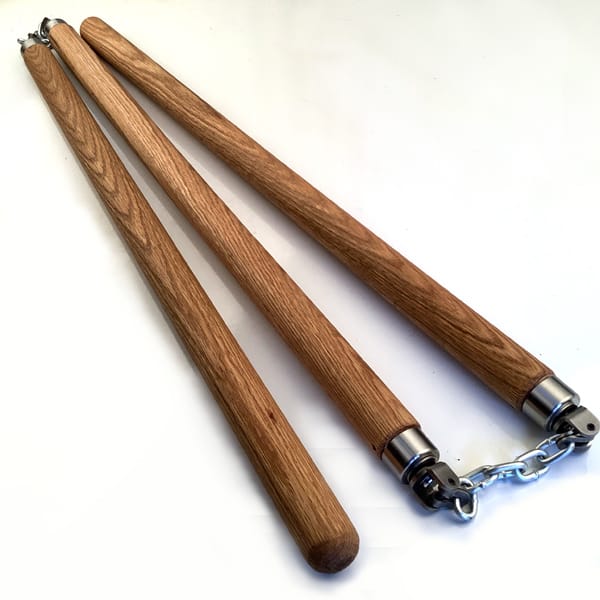The sectional staff is traditionally 3 sections of 24 inch handle attached by 2 sets of rope or chain. This is a hard martial arts weapon to master made even harder by cheap chain systems that do not move smoothly. With this weapon you need every advantage to gain the confidence needed to be comfortable with the movements. American Nunchaku Co has fashioned our three sectional staff with universal joint chains and a modified attachment that will hold up to the rigorous demands of your martial arts form and the countless drops and spins needed to master it. Currently we are offering them in Red Oak and White Ash. For the sectional staff these woods provide a medium weight and flexible yet strong grain needed for the weapon.
Over the course of 25 years making nunchaku we have also had customer requests for shorter modified hybrids of nunchaku and the sectional staff. These are sometimes known as YONSETSUKON and San Setsu Kon available in a number of lengths and sizes on our site. Many of these come about by customer requests so if you see something that is close to what you need, let us know and we may be able to make a modification with a new custom design.
-
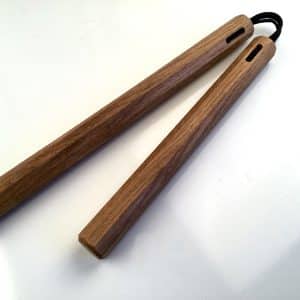 White Oak Uneven Sectional$69.00
White Oak Uneven Sectional$69.00 -
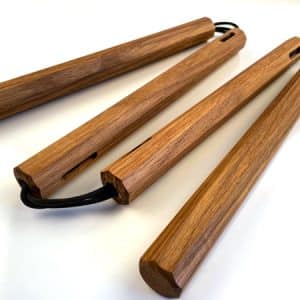 White Oak Slim YonSetsuKon$129.00
White Oak Slim YonSetsuKon$129.00 -
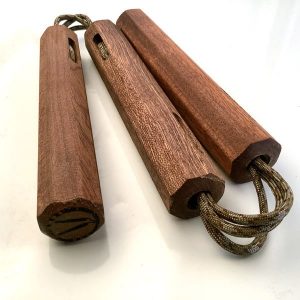 Sapele Slim SanSetsuKon 65$82.00
Sapele Slim SanSetsuKon 65$82.00 -
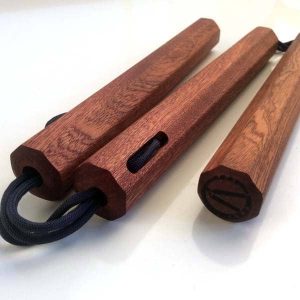 Sapele Slim San Setsu Kon$83.00
Sapele Slim San Setsu Kon$83.00 -
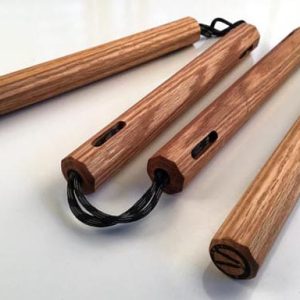 Red Oak Slim YonSetsuKon$119.00
Red Oak Slim YonSetsuKon$119.00 -
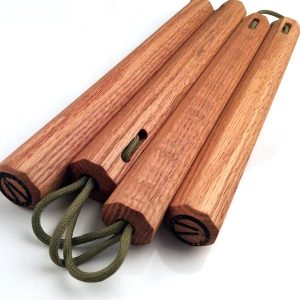 Red Oak YonSetsuKon$119.00
Red Oak YonSetsuKon$119.00 -
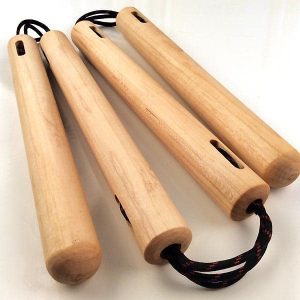 Hard Maple YONSETSUKON$199.00
Hard Maple YONSETSUKON$199.00
History of the Sectional Staff and Use
Although there is no historical evidence to support it, a popular modern-day legend states the weapon was made famous by Zhao Kuangyin, the first Emperor of the Song Dynasty (960 AD).
Historically made of white oak, waxwood, or Chinese red maple, modern staves are constructed from rattan, bamboo, various hardwoods or aluminum. For optimum fit, each of the three sticks should be about the length of the combatant’s arm {usually 60 centimeters (24 in) to 70 centimetres (28 in)} and have a combined diameter that easily fits in the hand {usually about 1.25 inches (32 mm)}. These are connected by chains of rings {usually of five inches (127 mm)}; modern versions use ball-and-socket joints.
The total length of the weapon is about the same as the Chinese staff (the gùn), and greater than that of the single staff (known in Japanese as a bō); Its larger size allows for an increased reach compared to the staff. Some of the techniques are similar to that of the staff, so spinning moves over the head and behind the back, such as helicopter spins and neck rolls, can be practiced with a regular staff. Other weapon techniques the three-section staff makes use of are similar to that of the pair of sticks used in escrima, a simple short chain, a whip, or the two-section staff. It is therefore advantageous for the user to have some familiarity with these weapons.
The three-section staff has the advantage of being usable as a long-range (whip), mid-range (flail or two section staff) or a short-range (pair of escrima) weapon. Acting as an extension of the user’s arms, the three-section staff can strike, flail, block, choke, trap, disarm and whip, often with different sections of the staff acting at the same time. The chains or binding ropes of the staff are used to entangle an opponent and their weapons. While it has three ranges, the three-section staff is best used as a short range weapon against longer-ranged weapons. In this configuration, a skilled practitioner can nearly simultaneously block an opponent’s strike, trap his or her weapon, and disarm them while executing their own strike with the free end of the staff.
While some martial artists have held that the three-section staff was used on the battlefield to entangle horses’ legs or to strike around shields, the complexity of the weapon and the length, difficulty of use, lack of sharp tips or edges and other advantages of such traditional battlefield weapons as spears, polearms (such as the yan yue dao), swords and so forth meant that the triple staff was more likely restricted to personal self-defense.

